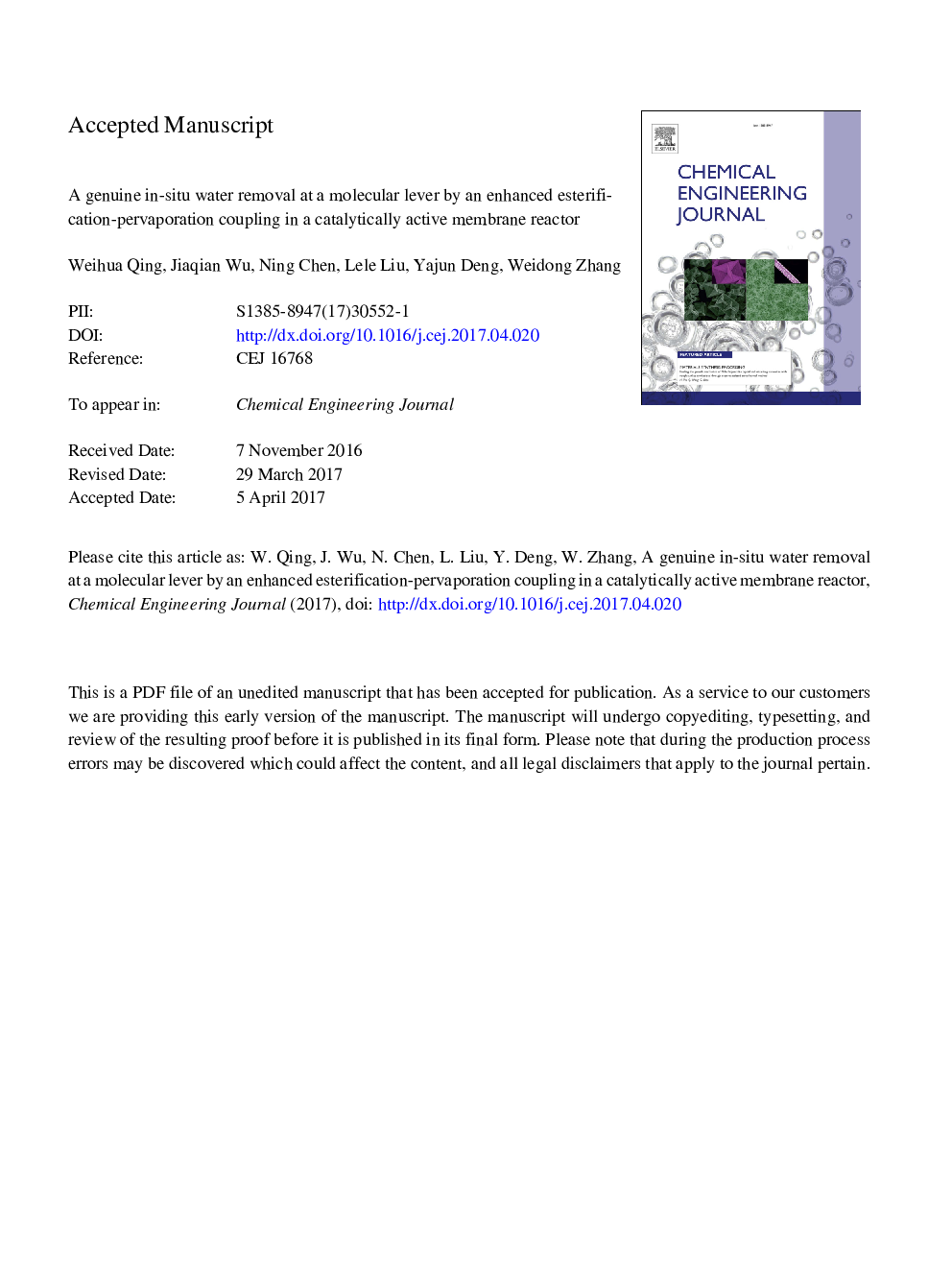| Article ID | Journal | Published Year | Pages | File Type |
|---|---|---|---|---|
| 4763075 | Chemical Engineering Journal | 2017 | 38 Pages |
Abstract
A better conversion enhancement of esterification between acetic acid and n-butanol was achieved in a catalytically active membrane reactor (pCAMR) when compared to that in a traditional inert membrane reactor (IMR). This enhancement was attributed to a novel composite catalytically active membrane in which a highly porous catalytic layer was introduced. SEM images showed that the membrane consisted of three layers: the top layer was a highly porous catalytic layer with massive macrovoids and “sponge-like” pores, the middle layer was a dense polyvinyl alcohol selective layer, and the bottom layer was a porous polyethersulfone support layer. The preparation of a highly porous catalytic layer instead of a dense one in the composite membrane greatly decreased the overall mass transfer resistance of the reactor from 6.7 Ã 105 to 5.6 Ã 105 s/m, a value which is even comparable to that of IMR (5.1 Ã 105 s/m) where the additional catalytic layer was absent. The effects of operational parameters on the esterification-pervaporation coupling performance in pCAMR were systematically evaluated. Through a reasonable match between reaction rate and water removal rate, a genuine in-situ water removal at a molecular lever was realized. For comparison, coupling performances in an IMR and a catalytically active membrane reactor with a dense composite membrane (dCAMR) were also investigated. Results showed that the coupling performance in pCAMR outperformed both IMR and dCAMR due to a combination of much lower overall mass transfer resistance and higher mass transfer driving force for water removal in pCAMR. After 45 h at 85 °C, the acid conversion in pCAMR reached almost completion, an approximately 43% of conversion enhancement was achieved when compared to equilibrium conversion.
Keywords
Related Topics
Physical Sciences and Engineering
Chemical Engineering
Chemical Engineering (General)
Authors
Weihua Qing, Jiaqian Wu, Ning Chen, Lele Liu, Yajun Deng, Weidong Zhang,
